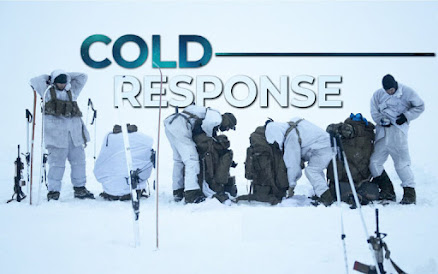US Spec Ops Admit to ‘Intentionally’ Provoking Russia With Arctic Missile Drill
NATO has dramatically ramped up its presence in Northern Europe and above the Arctic Circle in recent years, with thousands of troops deployed to Norway for cold-weather training, and the White House recently laying down a 10-year Arctic strategy calling for enhanced military presence in the region to “deter” Russian “aggression.”
US Special Operations forces “intentionally” provoked Russia in the Arctic by holding a missile drill on Wednesday, Special Operations Command Europe commander Lawrence Melnicoff has said.
“We are intentionally trying to be provocative without being escalatory,” Melnicoff told US media. “We’re trying to deter Russian aggression, expansionist behavior, by showing enhanced capabilities of the allies,” the officer added.
Melnicoff did not specify how the US was “deterring Russia” by engaging in “provocative” drills over 5,000 kilometers from America’s shores.
Wednesday’s exercise, conducted at the Andoya Space Center in northern Norway, about 500 km from Russia’s Murmansk region, saw US spec ops troops drop a long-range missile out of a C-130 strategic transport aircraft, with the missile launching in mid-air. The launch constituted the first successful demonstration of the US’ "Rapid Dragon" program in Europe.
Rapid Dragon is a palletized weapons system that has been tested on board C-130 and C-17 cargo aircraft, and is designed to launch Lockheed Martin AGM-158 JASSM cruise missiles against both ground and sea-based targets at standoff ranges (i.e., well outside of the effective range of enemy air defenses). The subsonic missiles have a range of between 370 and 1,900 km.
The Pentagon published footage of the missile test, showing the palletized weapons system dropping out of the C-130 and descending toward the ground using parachutes, with the missile dropping out of its launch container and roaring to life before proceeding to its target, eventually touching down in the water and detonating.
“It complicates Russian decision-making because we know that they’re targeting very, very large specific aggregations of allied power [like] Ramstein Air Base, RAF Lakenheath, things like that,” Melnicoff said of the system.
The missile test demonstrates that NATO’s capabilities are “survivable,” and that “if worse comes to worse and somebody takes out these power hubs, we can forward-project precision artillery fire across the alliance with our partners,” according to the officer.
The Pentagon considers Rapid Dragon an asset for US allies who do not have long-range bomber capabilities, with the system enabling them to engage in long-range strikes using ordinary cargo aircraft.
The US military has dramatically expanded its presence in Northern Europe above the Arctic Circle in recent years, regularly deploying Marines and warships to Norway and the Arctic Sea for cold-weather training and expanding intelligence collection. The US-led alliance has also set its sights on Sweden and Finland as those two countries prepare to join the bloc, prospectively adding 1,300 km worth of direct borders between the bloc and Russia. The Nordic nations’ NATO bid is currently being held up by Turkey, with Ankara demanding that Stockholm and Helsinki take “concrete steps” demonstrating they no longer support Turkish Kurdish militants which the Turkish government classifies as “terrorists.”
The White House released a 10-year "National Strategy for the Arctic Region" last month, calling for the further buildup of the US military presence in the region, the modernization of NORAD air defenses, and the construction of new Coast Guard icebreakers.


No comments:
Post a Comment